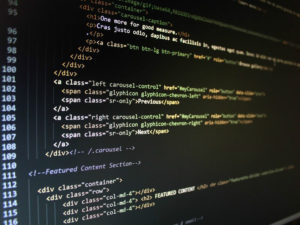When you think about hacking, you might picture a hooded figure typing away at a computer, numerous screens popping up as green text scrolls by. At least, that’s how Hollywood conceives it. In reality, hacking is often much less exciting—and it doesn’t usually result in anything too spectacular.
Hacking is a much more nuanced and slow-paced process than the movies make it out to be. And though it receives a bad rap, it isn’t always malicious. Few things in life are ever as black-and-white as they are in movies.
With that in mind, here are a few inconsistencies in Hollywood “hacking.”
1. There Are Screens Galore
In many hacking scenes, pop-ups appear on the screen at rapid-fire speed. These windows either result from the hacking attempt itself or opposing parties trying to thwart the invasion.
While programmers and hackers may work from multiple screens, these windows don’t appear in flurries like they do in movies. Otherwise, it’d be tough to accomplish anything with tons of text coming at you.
2. It Always Works on the First Try
Hacking isn’t the one-and-done process you’ve seen in movies like “Hackers.” You’ve probably come across plenty of movie moments where a character types away at a machine and gains access to their targeted system in minutes or even seconds.
However, trial-and-error is a major part of dealing with technology, and hacking is no different. Digital experts refer to it as “fuzzing.” Fuzzing occurs when someone inputs mutated data into a program to find defects within the code. It’s not so easy to strike gold on the first try, and it often requires the hacker to experiment with a ton of permutated data before finding a winner.
Of course, it’s not as fun to watch someone explore datasets for hours, which is why movies speed it up.
3. Sophisticated Hacks Are the Most Successful

Writing extensive code and creating clever backdoors aren’t the only ways to pull off a hack. Surprisingly, many successful attempts result from “social engineering.”
This technique is a form of hacking that targets human emotions and weaknesses rather than computer vulnerabilities. You may know it best as email, credit card, and bank account scams. Cybercriminals exploit others’ absentmindedness or trusting personalities to get more individuals to fall for the trap.
Devices categorized under the Internet of Things—such as smart speakers and watches—are openings for nefarious activities. While cyberattacks may not be your chief concern when buying smart home sensors, it’s an overlooked possibility.
4. Hacking Is a Game for Lone Wolves
Hackers always know what they’re doing and don’t need to check their notes, right? Not quite. Though films like “Blackhat” portray them as solo operators, many of them work in teams.
Even if they don’t directly collaborate, they use each other’s work as a blueprint for their own. Changing algorithms and accessing encrypted systems is no easy feat, especially when you’re working alone. Sharing the work keeps operations running.
Also Read: Living in a Survival Shelter: 4 Things the Movies Don’t Tell You
5. The Interfaces Are Unrealistically Pretty
In movies like “Swordfish” and “Skyfall,” characters examine eye-catching 3D interfaces while pulling off their hacking jobs. It’s common to see this detail in movies where the directors want to emphasize the special effects and dramatics. However, in real life, accessing any computer system consists of a lot of code, and you won’t get anywhere without it.
A terminal or console interface is more efficient and realistic than 3D renderings. These interfaces lead the hacker right to the necessary items without the flash or glamor.
6. It’s Inherently Unethical
Not every type of hacking spreads personal information and destroys livelihoods. White-hat hacking is a form of ethical hacking that people use to test security systems for weaknesses.
Many businesses employ white-hat hackers to identify potential cybersecurity risks. Instead of embezzling money like the team in “Office Space,” these individuals patch openings that thieves and cybercriminals could access.
Defining Hacking in Realistic Terms
Even if you’re not a computer whiz, this post hopefully provided you with some insight about Hollywood magic and its techie quirks. Thrill and excitement eclipse accuracy — which is entertaining for viewers but amusing or annoying for those living those lives.
While hacking may not be the fast-paced whirlwind that films show it to be, it still serves a purpose in the real world. Whether it’s beneficial or destructive, though, is another debate.